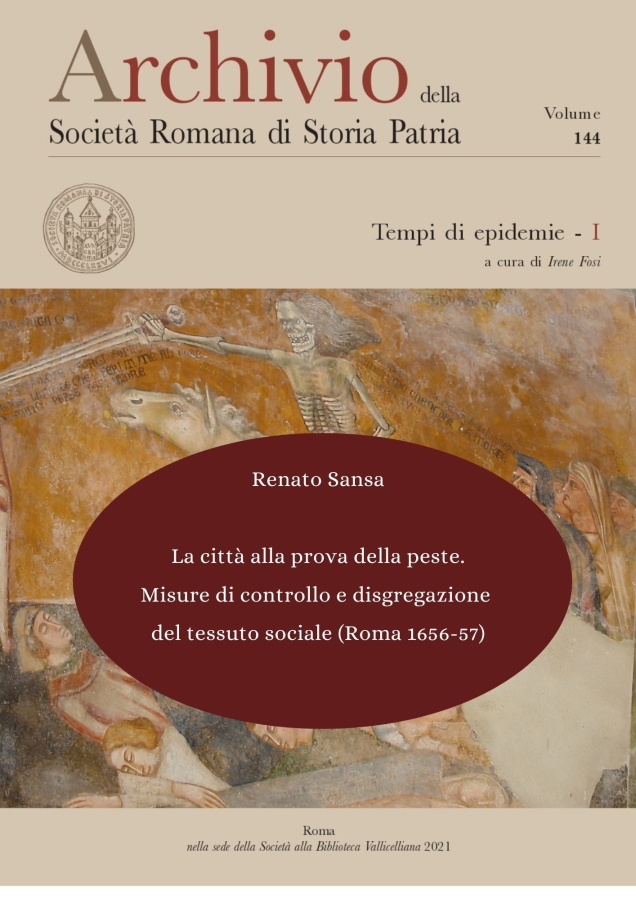Archivio della Società romana di storia patria vol. 144.10 – Renato Sansa
6,00€
Codice DOI 10.61019/ASRSP_144_10
File formato PDF
La città alla prova della peste. Misure di controllo e disgregazione del tessuto sociale (Roma 1656-57)
Renato Sansa
Plagues have often represented social and political ruptures of the established order, with strong repercussions for the pre-existing economic balance. Across the modern era cities have experimented with methods of controlling contagion. The common denominator of measures to contain the plague (quarantine, lazarettos, sanitary cordons, licences or bills of health) was the isolation of the infected. In cities affected by the disease, prophylaxis included the “confinement” of those suspected of having contracted the disease in their homes and of the visibly sick in lazarettos. These measures exacerbated social differences and contributed to the disintegration of the urban fabric. The exaggeration of the binary healthy/diseased triggered mechanisms of exclusion that were particularly noticeable with regard to the poor, foreigners and other marginal groups. This article examines the case of the management of the plague in Rome in 1656-57 in order to ascertain how sanitary measures ordered by the authorities set in motion a series of tight controls of social exchanges, up to the suspension of normal activities and relationships typical of urban life.
Archivio della Società romana di storia patria, 144
maggio 2022, pp. 18


